With sharpened pencils and notebooks waiting to be filled, children worldwide will return to school in the coming weeks, but a typical school day looks different in every country.
Before the homework starts to pile up, travel the (photo-gallery) globe and see how kids everywhere experience education in a single school day.
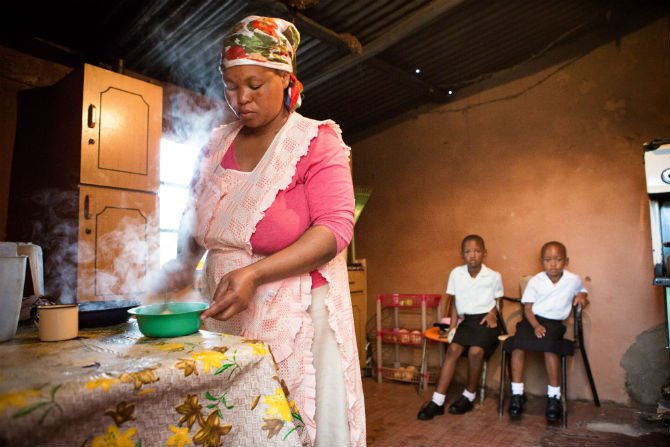
Breakfast
Sisters Sisanda, 5, and Anele, 9, start the school day with a home-cooked meal from their mother, Jabulisiwe. After breakfast, Sisanda will attend World Vision's psychomotor education program for preschool children in the family's community in South Africa. The program links physical activities to intellectual and psychological development and works to impart values such as non-violence, self-discipline, and open communication. And there are few better ways to prepare for a day of learning than with a nutritious breakfast.
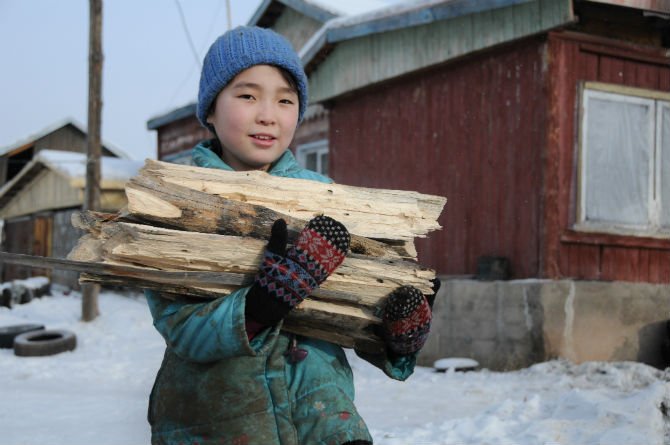
Morning Chores
After breakfast and before she heads to school, Anujin, 10, helps her parents around their house in Altanbulag, Mongolia, by gathering wood. Chores are only part of Anujin's day — she spends the majority of her time at school — but 17 million girls around the world will probably never attend school, according to UNESCO. Sometimes chores, like collecting water and farming, or sickness related to waterborne disease and malaria, keep kids out of the classroom. As a sponsored child, Anujin and her family have benefited from World Vision's agricultural training and water programs in Altanbulag — so Anujin is free to attend school every day.
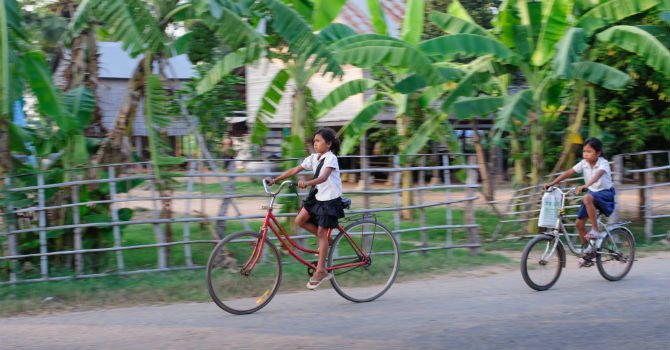
Bike to School
Biking and walking are how most kids around the world get to school each day. These girls in Leuk Daek, Cambodia, are fortunate — not only do they have bikes, but they are also able to attend school. Of the 57 million children worldwide ages 5 to 11 who aren't enrolled in school, more than half are girls. Through child sponsorship, education is a major focus for World Vision in Leuk Daek.
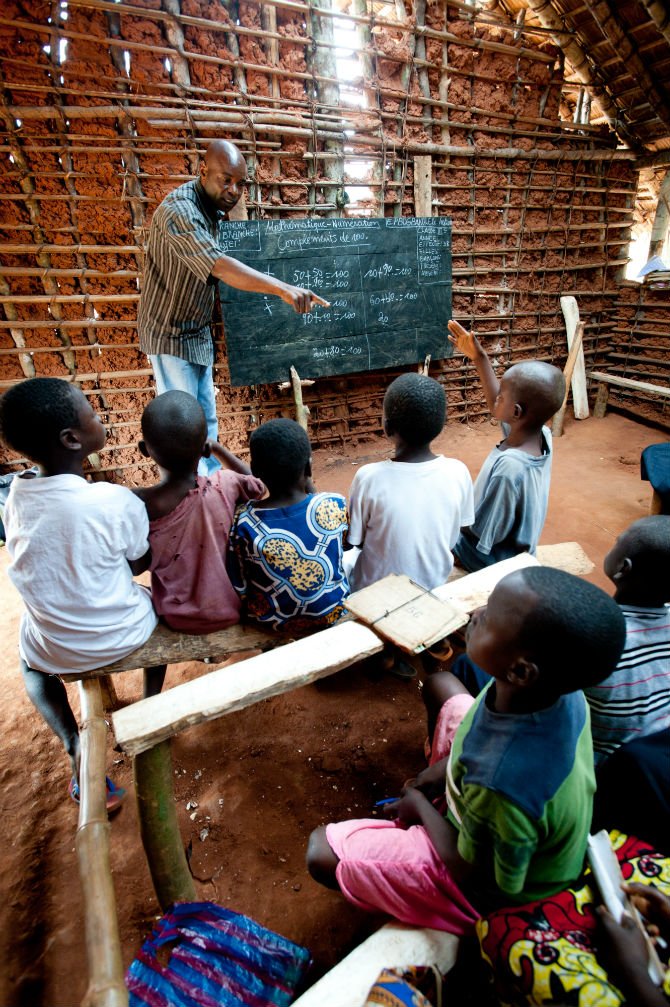
Math Lesson
Bobakole Primary, a rural school near Gemena, Democratic Republic of the Congo, is full of eager students. Classrooms are packed and pupils have only thin wooden boards or bamboo poles to sit on. When it rains, which is often in this equatorial rain forest, the students run for shelter and shutter the school. World Vision is in the planning stages of its development work in this community.
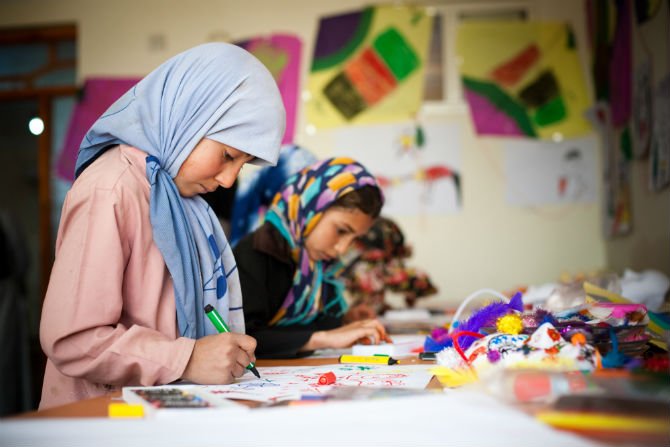
Art Lesson
Drawing and painting are more than just a creative outlet. These girls in Herat, Afghanistan, participate in art therapy sessions at World Vision's Street Children Center. Children in Afghanistan face some of the worst conditions in the world; only 6 percent of Afghan girls attend secondary school. But here at the center, children receive basic education, shelter, nutritional meals, and more. In art therapy sessions they paint and draw self-portraits and pictures that give insight to what the children are thinking or experiencing.
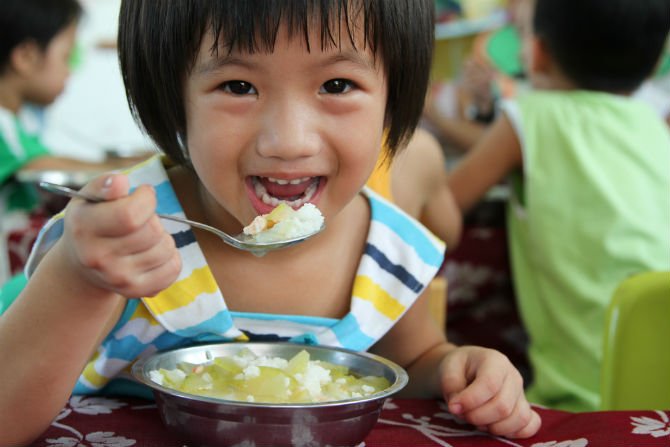
Lunch
Halfway through the school day, it's time for lunch. For 4-year-old Mai and her fellow students at Hoa Khuong Kindergarten in Hoa Vang, Vietnam, vegetable soup prepared by their teachers gives them energy for afternoon lessons. World Vision supports the school to ensure nutritious lunches, clean drinking water, and full-day attendance.
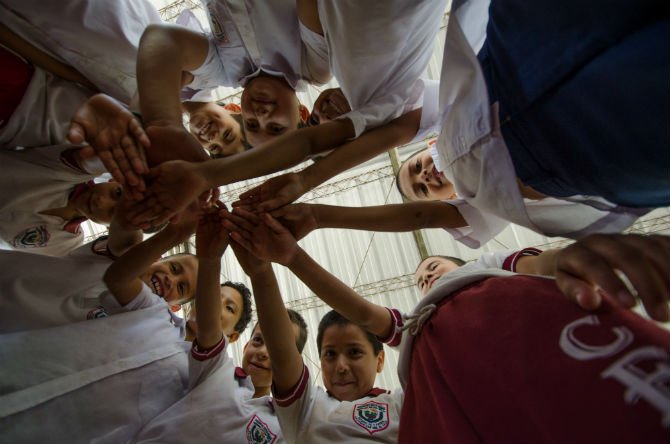
P.E. Class
Playing is learning for third-graders in El Salvador. As they enjoy a break in their school day for physical education, they also learn teamwork and how to work together.

Afternoon Lesson
For children living in refugee camps and camps for internally displaced persons (IDPs), continuing their education adds to their sense of stability. One of three schools in Afghanistan's Maslakh IDP camp, this school educates 2,700 students a day — but with only 10 classrooms, one class must be held outside in the shade of a building. World Vision is providing basic education services and improvement plans for the camp.
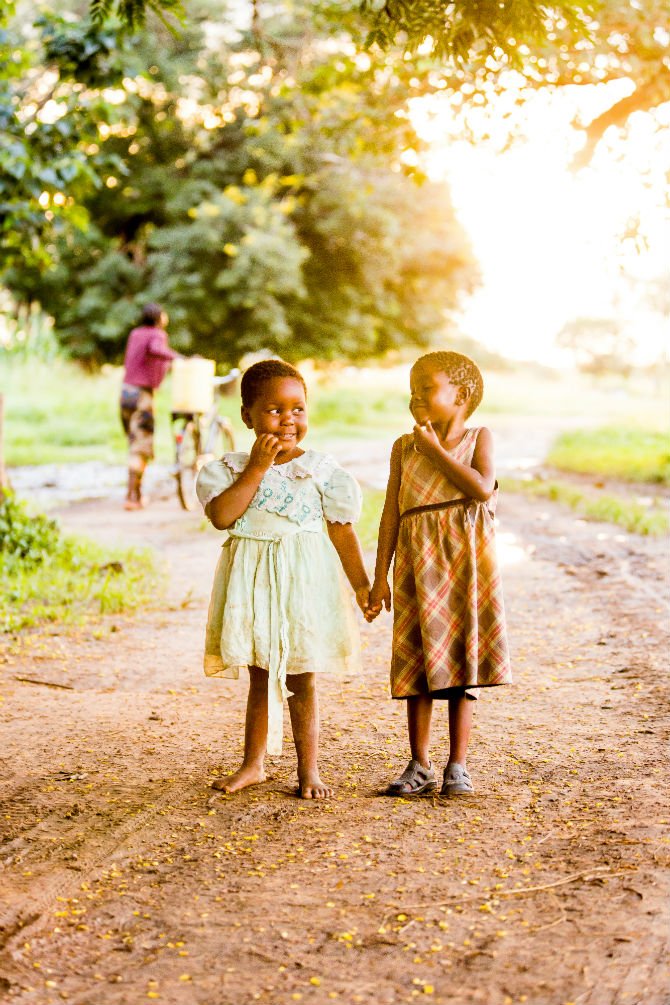
Walk Home
Barbara and Lulu, both four-years-old, walk home from school together at sunset.
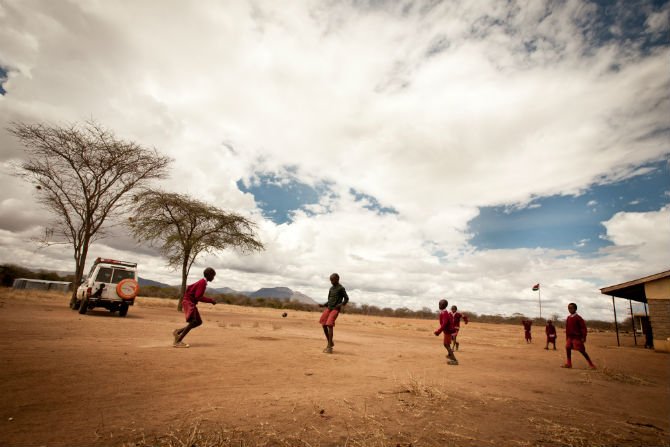
After-School Sports
For young Kenyans, soccer is the sport of choice for after-school pick-up games. Thankfully, these boys have the energy to play after a day in the classroom — students here have access to clean water and nutritious lunches provided by World Vision.
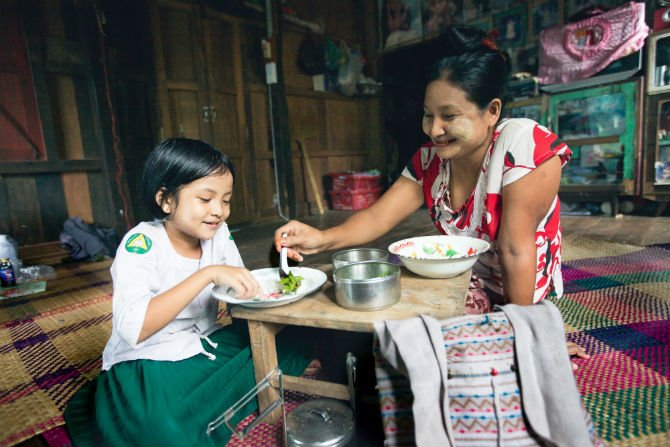
Dinner
Aye's parents finished their education with primary school, but they want more for their 7-year-old daughter — so they've invested in Aye's school tuition, which means she attends about 12 hours of classes. When she gets home at the end of a long day, Aye goes straight to the dinner table to eat with her mother.
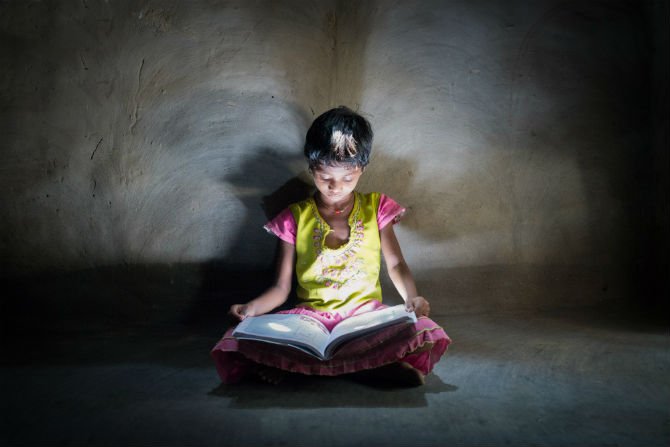
Homework
To prepare for tomorrow's lessons, Rekha studies by the light from the fireplace in her family's home. Although electricity has reached their village in Orissa, India, her family is the only one unable to afford it — her mother has other priorities. "Until my physical condition [no longer] allows me, I will keep working to bring food to our family and send my girls for education," says Rekha's mother, Belmati.
World Vision believes life without education is a life without opportunity. Learn more about our work helping the world’s most vulnerable children access quality education and attain functional levels of literacy, numeracy and essential life skills at wvi.org/education, or watch this video about how we’re empowering boys and girls to receive quality education in the Asia-Pacific region.
This photo gallery was authored by Elizabeth Hendley of World Vision US and originally appeared here. Edited by Meredith Hastings.